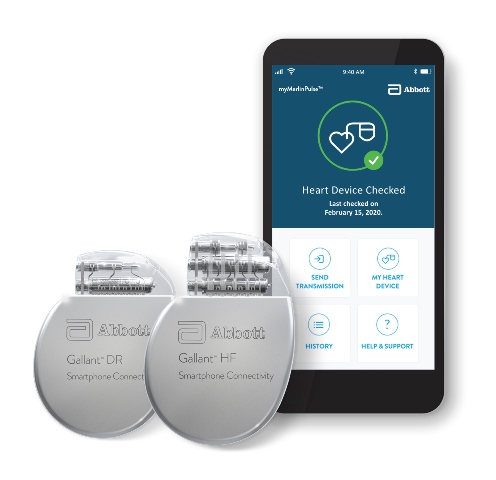
A 61-year-old year old man has become the first patient at the Royal Free London to receive a new type of implantable defibrillator, designed to both ‘shock’ his heart into rhythm if it should speed up and provide his doctors with real-time information.
Issac Williams, from Kingsbury in Brent, underwent the procedure at Barnet Hospital - the arrhythmia hub of the Royal Free London at the beginning of December. The equipment – an implantable cardioverter defibrillator (ICD) was inserted under local anaesthetic via a vein just below his collar bone, with leads inserted directly into his heart. The battery sits under his collar bone just beneath the skin and is connected via a smartphone app with Bluetooth connectivity, to Issac’s own mobile phone.
Cardiology consultant, Dr Raj Khiani, who carried out the hour-long procedure to insert the Gallant device said it detects any dangerous speeding up of the heart rhythm and delivers a ‘jolt’ if necessary. This is a lifesaving technology used to resuscitate patients at risk of cardiac arrest from their heart condition.
Dr Khiani explained: “In some patients with heart failure there is a possibility that their heart rate will speed up to a dangerous fast heart rhythm. The ICD will then deliver a shock, which the patient will feel as a jolt. This shock will restart the heart from a cardiac arrest back into a normal rhythm. The patient might collapse to the floor but the difference is they will get up and walk away. They then give us a call and we can assess the data from an app which has been downloaded onto their own mobile phone. ICD technology has been around for years but the big step forward is that patients can be home monitored via an app on their own mobile phone. Before if someone had an ICD they would face six monthly check-ups at the hospital for the rest of their lives but this does away with that as we can now monitor their ICD remotely - we only have to bring patients into hospital if we need to reprogramme the defibrillator.”
The technology is only available for new implants and can’t be retrospectively added to current pacemakers or defibrillators. It is suitable for people who have had a life-threatening abnormal heart rhythm, as well as for those for whom tests show they are a risk of having one, such as those who have heart conditions, including some patients with cardiomyopathy.
Dr Khiani adds: “The data is encrypted and secure and allows information about the ICD, including battery life function of the leads, as well as any treatment delivered by the device, to be downloaded directly via the cloud to the team working in the hospital. This means we can monitor patients very closely from home and this reduces the need for the patient to come into the hospital for a face-to-face appointment. This has been especially helpful during the COVID pandemic to minimise the risk to patients by reducing the number of visits to the hospital.”
Dr Khiani concludes: “Patients who will benefit come from all age groups – from children to the elderly. We carry out approximately 500 pacemaker operations a year at Barnet Hospital and an additional 200 complex device implantations a year, including ICD implants such as this device. This is the first device to market but we know others are on their way.”
Issac, a railway ticket collector, said: “I feel good in myself and glad to have had the procedure. It’s enabled me to get back to work and living my life.”
Main image: L-R: Dr Raj Khiani, Issac Williams and physiologist Cheryl Ralph

Gallant device and app
 Translate
Translate
